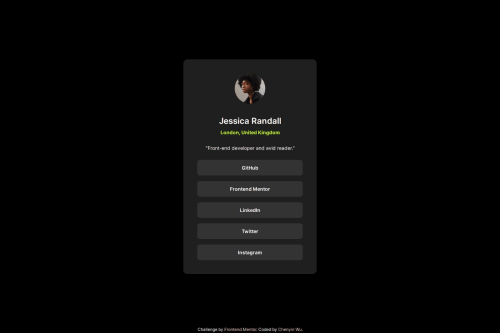Social Links Profile CSS

Solution retrospective
I liked implementing transitions to the buttons with hover effect, it added a bit more depth to the design.
What challenges did you encounter, and how did you overcome them?In figma, the design looked identical in both mobile and browser view so I opted out of adding a media query. However, upon further look, I realized that the dimensions were indeed different, so I added a media query. I don't know the best px to use for specific devices, so I went with the one given in figma.
What specific areas of your project would you like help with?When it comes to buttons, I'm not sure if I should use p with css styles to make it look like a button, or if I should use the button tag that already exists in HTML. I would like to know if there's specific situations where one is better than the other, or if it's just a personal preference for developers.
Another area is the sizing; currently I use fixed sizing (px) for the container since I'm trying to get the final product to look as similar to the design as possible. Should I instead use em/vw/vh/% to make it more responsive, despite given the specific dimensions in figma?
Please log in to post a comment
Log in with GitHubCommunity feedback
- @Zy8712
Hi @yinnie, your site looks great!
To answer your question:
- this project is a social links profile so you should probably use the links tag
<a>for the boxes as it is built for that intended use. This would be better for semantics and we can use the built-in attributes for link tags likehrefandtarget
The only other feedback I'd give is that the alt description for the image can be left blank if you want (
alt="") because its usually only used to describe images that convey important information.Aside from that your site looks great!
Marked as helpful - this project is a social links profile so you should probably use the links tag
Join our Discord community
Join thousands of Frontend Mentor community members taking the challenges, sharing resources, helping each other, and chatting about all things front-end!
Join our Discord